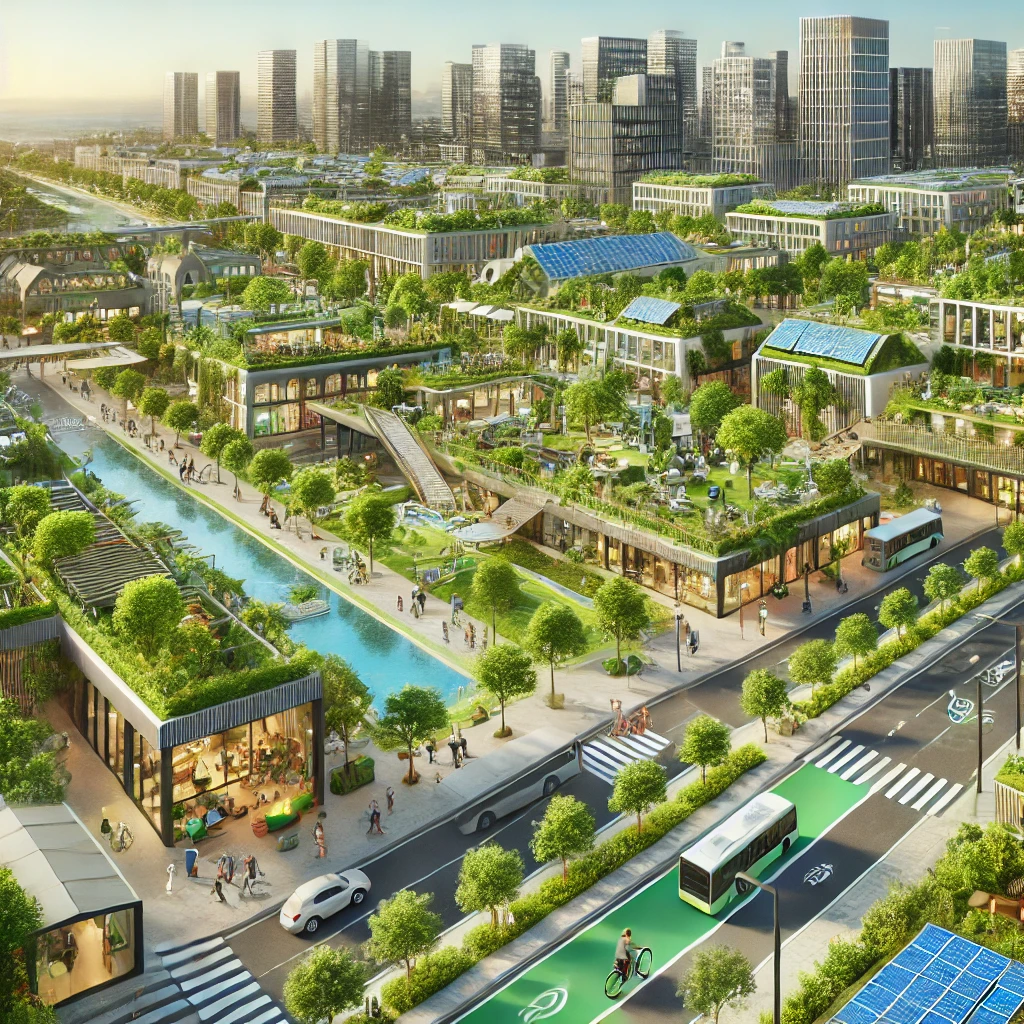As cities around the world continue to grow, sustainable urban planning has become essential for creating livable, eco-friendly environments that meet the needs of current and future generations. By integrating environmental, social, and economic sustainability into urban design, cities can reduce their ecological footprint, enhance quality of life, and promote long-term resilience. Here’s a closer look at the key benefits of sustainable urban planning and why it’s crucial for building smarter, greener cities.
1. Reduced Carbon Emissions
Sustainable urban planning prioritizes designs that reduce greenhouse gas emissions. This includes the development of public transportation systems, bike lanes, and pedestrian-friendly spaces that encourage walking and cycling instead of car use. Green infrastructure, such as parks, trees, and green roofs, also helps capture carbon dioxide while improving air quality. By creating cities that promote eco-friendly transportation and green spaces, sustainable planning helps mitigate the impact of climate change. The benefits of sustainable urban planning in this context are clear.
2. Improved Public Health
Cities designed with sustainability in mind promote healthier lifestyles by encouraging physical activity, reducing air pollution, and providing access to clean, green spaces. Urban green areas, parks, and nature preserves offer residents a place to exercise, relax, and connect with nature, improving both mental and physical well-being. By reducing reliance on cars and promoting active transportation options, sustainable urban planning also helps lower pollution-related health risks like respiratory issues and heart disease. These are just some of the benefits of sustainable urban planning.
3. Efficient Use of Resources
Sustainable urban planning emphasizes resource efficiency by optimizing the use of land, energy, and water. This can include designing energy-efficient buildings, utilizing renewable energy sources such as solar and wind, and incorporating water-saving technologies like rainwater harvesting and greywater recycling. Efficient waste management systems, including recycling and composting programs, also reduce landfill waste and promote the circular economy, ensuring that resources are used and reused in a sustainable manner. Once again, the benefits of sustainable urban planning prove themselves invaluable.
4. Enhanced Mobility and Accessibility
A key goal of sustainable urban planning is to create cities that are well-connected, accessible, and easy to navigate. By investing in public transportation systems such as buses, trams, and light rail, cities can reduce traffic congestion, lower pollution, and provide residents with affordable and efficient mobility options. Walkable neighborhoods and bike-friendly infrastructure ensure that people have alternative ways to commute, reducing the need for car ownership and improving the overall quality of life.
5. Resilience to Climate Change
With the increasing threat of climate change, sustainable urban planning focuses on creating resilient cities that can adapt to changing environmental conditions. This includes the implementation of flood-resistant infrastructure, such as permeable pavements and rain gardens, to manage stormwater and prevent flooding. It also involves designing cities with more green spaces, which can act as natural buffers against extreme weather events like heatwaves and storms. By building cities that are more resilient to climate change, sustainable planning helps protect residents and infrastructure from future risks. Once again, the benefits of sustainable urban planning are evident.
6. Social Equity and Inclusivity
Sustainable urban planning seeks to create cities that are inclusive and equitable, ensuring that all residents have access to essential services such as housing, healthcare, education, and transportation. By developing affordable housing options, mixed-use developments, and public amenities, cities can reduce social inequality and foster vibrant, diverse communities. Additionally, sustainable planning promotes the participation of all citizens in the decision-making process, ensuring that the voices of marginalized and underrepresented groups are heard. Another significant aspect of the benefits of sustainable urban planning.
7. Economic Growth and Job Creation
Investing in sustainable urban planning can drive economic growth by creating new opportunities for green industries, including renewable energy, public transportation, and eco-friendly construction. Green infrastructure projects, such as solar panel installations and sustainable building retrofits, generate jobs while reducing environmental impacts. Moreover, cities that prioritize sustainability are more attractive to businesses and residents, boosting economic activity and competitiveness.
Conclusion:
Sustainable urban planning is essential for creating cities that are environmentally responsible, socially inclusive, and economically vibrant. From reducing carbon emissions and improving public health to enhancing mobility and fostering economic growth, the benefits of sustainable urban design are wide-ranging and long-lasting. As cities around the world continue to grow, adopting sustainable planning practices is crucial for building a greener, more resilient future. Indeed, the benefits of sustainable urban planning cannot be overlooked.

